Drugs and Poisons - Poisons
1/26
There's no tags or description
Looks like no tags are added yet.
Name | Mastery | Learn | Test | Matching | Spaced |
|---|
No study sessions yet.
27 Terms
Aconitine
• Produced by plants in the Aconitum genus
• More commonly known as “wolfsbane”
• Used by Romans
Aconitine
• Locks sodium-ion channels in the open
conformation (agonist)
• Depolarizes membrane potential—nerves
cannot reset
• Death occurs due to cardiac arrest and/or
respiratory paralysis
Aconitine
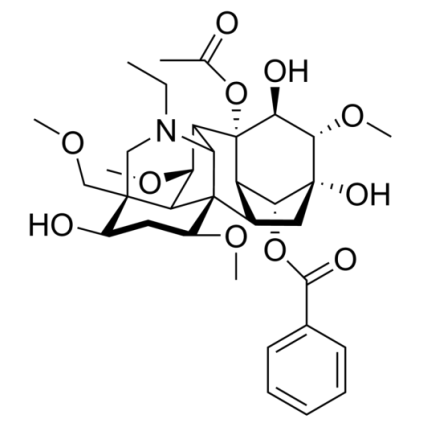
Batrachotoxin
• Poison dart frogs (do not make toxin, bacteria or diet)
Batrachotoxin
Locks sodium-ion channels in the open conformation (agonist)
• Depolarizes membrane
potential—nerves cannot
reset
• Death occurs due to cardiac
arrest and/or respiratory
paralysis
• Frog ion channels have a
different structure that do
not bind the poison
Batrachotoxin
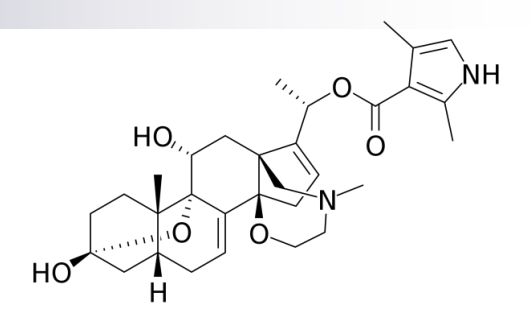
Coniine
Isolated from poison hemlock (Conium
maculatum) and Yellow Pitcher plant
• Used to execute Socrates (399 BCE)
Coniine
Locks sodium-ion channels in the open
conformation (agonist)
• Binds specifically to the sodium ion channels that
respond to acetylcholine or nicotine
• Death caused by asphyxia due to inability to breathe
Coniine
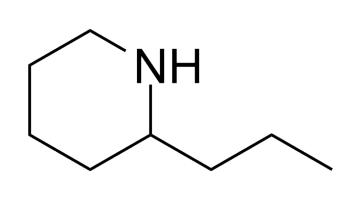
Tetrotodoxin
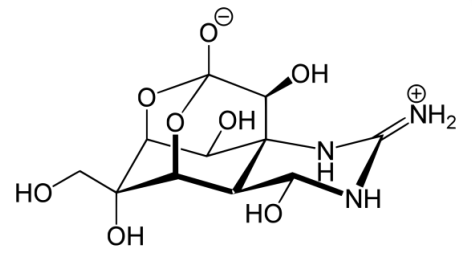
Tetrotodoxin
Isolated from many marine sources
• Pufferfish, octopi, squid & horseshoe crabs
• Also found in some flatworms and ringworms
• Produced by symbiotic bacteria
Tetrotodoxin
Blocks sodium ion channels (antagonist)
Nerves unable to signal—loss of feeling
Toxic doses cause paralysis of heart and
diaphragm
Sarin
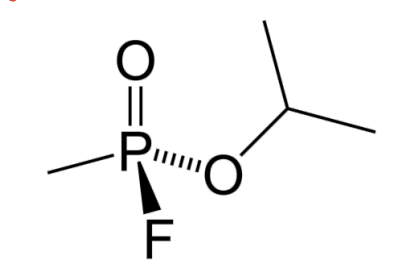
Sarin
Developed by German chemist Gerhard
Schrader in 1938
Based on a pesticide called Tabun (“taboo”)
Utilized by Germany as a chemical weapon in WW2
Also used during the 1988 Iran-Iraq war and 2013 Syrian Civil
War, as well as some domestic terror attacks in Japan
Many related compounds include VX, Soman & Novichok
Sarin
Irreversible inhibitor of acetylcholine esterase
(AChE)
Leads to a buildup of acetylcholine, causing
continuous neuron activation
Death caused by asphyxia due to inability to control
the diaphragm
Ricin
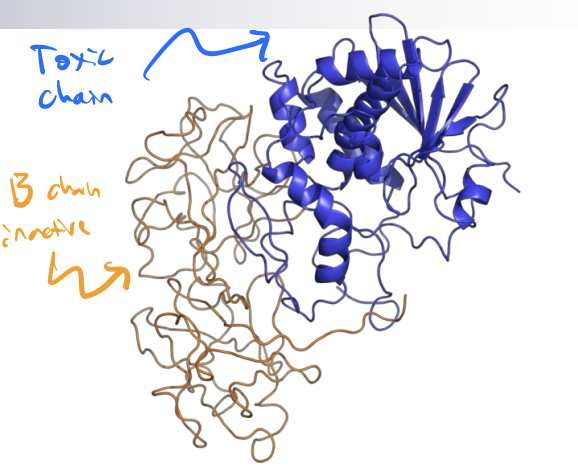
Ricin
Isolated from Castor beans
Ricinus communis
◼ A protein heterodimer consisting of two chains
(A & B) held together by a disulfide bond
The A-chain (blue) is the active chain responsible for
toxicity
Ricin
A-chain cleaves adenine in 28S rRNA
A structural component of the ribosome needed for
function (ribosomal RNA)
One ricin A-chain can cleave these adenine residues
in 1500 ribosomes per minute
Death occurs by shock and organ failure
Amatoxin
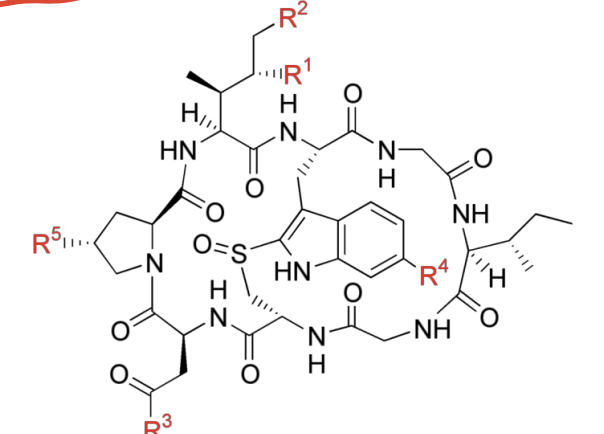
Amatoxin
Interferes with the movement of the “bridge helix” in RNA polymerase II
Movement of the bridge is
required for translocation
α-Amanitin binding reduces
nucleotide rate from several
thousand per minute to <10 per
minute
Death occurs several days after
ingestion typically due to organ
and kidney failure
Amatoxin
Isolated from mushrooms, primarily those in the
genera Amanita, Galerina, and Lepiota
Commonly known as “death cap” or “paddy straw”
Many related compounds, depending on R groups
◼ α-Amanitin, β-Amanitin, γ-Amanitin etc.
◼ α-Amanitin most responsible for human deaths
Mustard Gas
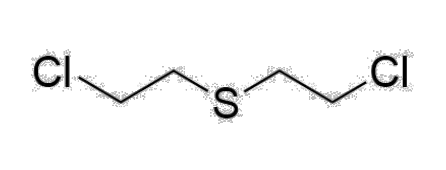
Mustard Gas
First synthesized by several European
chemists in the late 1800’s
Exact dates are unclear
First utilized in war by Germany in WWI
Characteristic bullae (fluid-filled blisters)
Mustard Gas
• Initial effects are intense itching and blistering (chemical burns). Death occurs due to severe burn injuries.
• Alkylating properties make them strongly mutagenic and carcinogenic (can also cross-link DNA)
Zyklon B

Zyklon B
Cyanide-based pesticide
Hydrogen cyanide released once canister is
exposed to air
Used by Nazi Germany to execute Jews
starting early in 1942
Zyklon B
Binds the heme in cytochrome c oxidase
Halts electron transport chain
Acute exposure leads to cardiac arrest